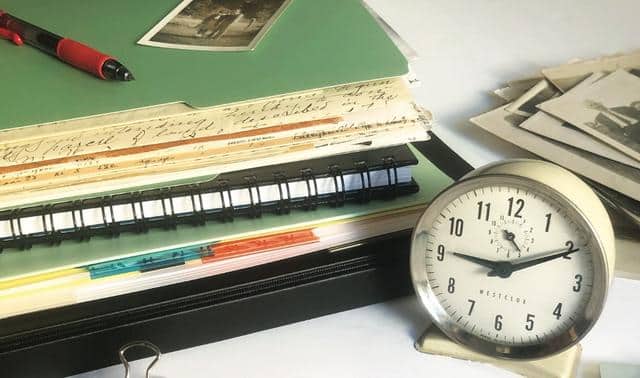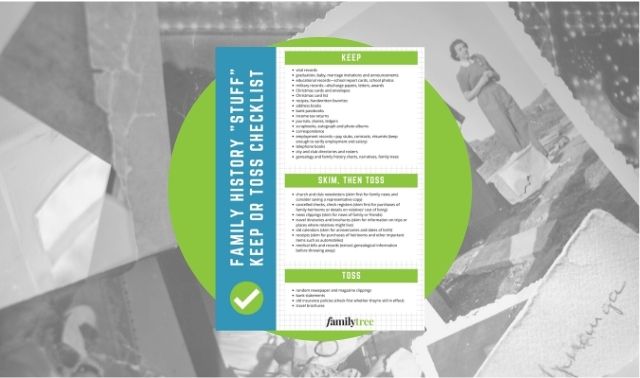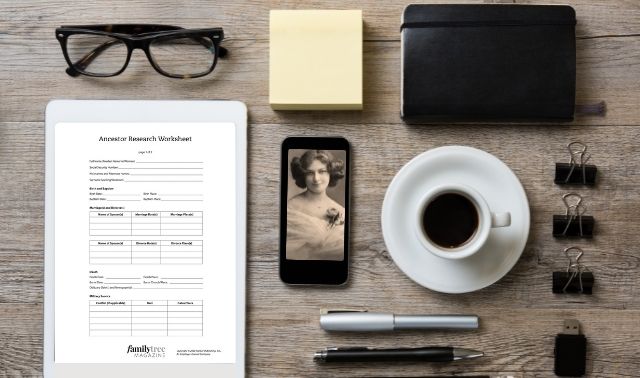Keeping your research organized is a bit like saving for retirement: The best time to start was yesterday, but the second-best time is today. It’s much easier to organize your research as you go.
But since many of us have been accumulating data and documents for years (even decades) and have other obligations, it can be easy to fall behind.
Let’s say this upfront: You probably can’t organize all your research in a single day. Sustainable organization requires a thoughtful plan and constant maintenance, plus a not-insignificant amount of time. (We’ve got guides to thinking about your research in longer units of time: one week, one month or a whole year.)
But if one day is all you can spare to get your research organized, here’s how to make the most of it.
Before the Day
To have the most efficient work day possible, you’ll need to prepare days or even weeks in advance. Here are some ways to set yourself up for a productive day ahead of time.
Clear the day
If you can help it, make this day only about your genealogy. Having other tasks or events (appointments, errands, parties or social engagements, chores, etc.) during this time will disrupt your flow, so avoid them as best as you can. Obtain any necessary child- or petcare, and submit any time-off requests to your employer. Maybe even set up an email away message or note on your front door, or inform relatives and friends that you’ll be out-of-touch and nose-down in genealogy work.
Create goals
With such a narrow time window, you’ll need to decide what you want to accomplish. What specifically can you do in that day to feel successful? What do you really hope to achieve?
Not being upfront with their goals is one of the most common mistakes people make when tackling an organization project, according to professional organizer Lahni Carney. “We see this in clients who make the process a lot longer than it needs to be with an inability to make decisions, wanting to change things over and over,” says Carney, who owns organization-consulting service Clutterless Home Solutions. “It’s very important that clients and everyone involved are on board, or else the project won’t be as successful.”
Write down your goals for the day, and be as specific as possible. We’ve written before about creating “S.M.A.R.T” goals, which are:
- Specific (i.e., narrow in scope)
- Measurable (have clear criteria for whether or not they are completed)
- Achievable/Attainable or Actionable (can be implemented by you)
- Realistic (can reasonably be done with the available time and resources) or Relevant (fit into your larger goals)
- Time-bound (have a deadline)
Here are 14 organization goal ideas that could reasonably be accomplished in a single day. Though not all of them meet the S.M.A.R.T. criteria, you can tailor them to do so and reflect your own research:
- Standardize file names (either digital or physical)
- Standardize place names, dates, or personal names in your online tree/software program
- Color-code folders (either digital or physical)
- Fill out new, “clean” research forms to outline the scope of your research and what progress you’ve made
- Scan several piles of photos or documents
- Sort through a specific box(es) of unorganized materials
- Create an inventory of records you have for each direct-line ancestor, and what you still need
- Download record images of a certain type (e.g., federal censuses) for all known direct-line ancestors; name and sort them as you go
- Audit your existing filing system: How are your files currently organized? What is the scope of your “unorganized” pile?
- Gather all your physical research—research notes, copies of records, boxes of unsorted materials, photos—in one place
- Collect digital files from multiple drives/servers onto one device
- Create a specific genealogy report: Retrieve and curate facts. (Leave any additional research items for another time.)
- Create and implement a digital backup system: Investigate options and make any needed purchases. Create a schedule for regular backups
- Move data between trees or software: Ensure materials copied over correctly, and re-attach media and sources as necessary
Remember, too, that the focus for this day is organization, not finding documents. Your goals should be focused on organizing the materials you already have, not searching for new ones or filling in any holes in your family story. “Start small. Choose one aspect of your genealogy you want to organize better,” says Gena Philibert-Ortega, professional genealogy researcher and instructor of Family Tree University’s “Organize Your Genealogy Research” course. “Just focus on that and not all your genealogy research.”
Prioritize your time
Certain research tasks are more important than others, and (with limited time) you’ll have to place higher value on some over others. To help triage, create a “must-do” list of your most pertinent, highest-priority tasks for the day, as well as a “would be nice” list. That way, you’ll focus on the most important items first, while also creating a list of tasks to pursue if you finish that high-priority list but still have time left.
One framework for prioritizing tasks is the Eisenhower Matrix. Named after the general-turned-president Dwight Eisenhower, this method evaluates to-do items using two major criteria: urgency (i.e., timeliness) and importance. It then creates a four-quadrant matrix that dictates what to do with tasks that fit into either category:
| Urgent | Not Urgent | |
| Important | Do this first | Schedule to do later |
| Not Important | Delegate* | Don’t do |
You won’t need military efficiency to have a successful organization day. But thinking of your tasks through this lens might help you determine what’s really worth your limited time.
Also schedule your day to take best advantage of your most-productive times. Even though I’m a night owl, I like to front-load work days with tasks so I can gather momentum and capitalize on being fresh.
Gather materials
You want to maximize your organization day. Trips to the store or time spent rummaging through your house for supplies can be a huge time suck. So once you have a goal, collect any physical items you’ll need:
- file folders and tabs
- a scanner
- form printouts
- a filing cabinet
- boxes/papers/photos/documents/media cards you want to sort
- other archival supplies
- refreshments
- items to make the day more fun or comfortable
Don’t forget to charge the electronic items you’ll need throughout the day, and obtain any needed replacement batteries.
During the Day
It’s finally here—your big organizing day. Here’s how to make it productive and efficient.
Take short breaks
You’re not a machine. To do your best work, you need to periodically rest to keep your brain and body sharp.
What does that look like? When looking at a whole day, I often schedule breaks like I did when I worked an hourly-wage retail job. Per company policy, I had to take one 15-minute break every four hours and one 30-minute break every six hours. This model was likely designed to comply with labor laws, but it does create a nice balance of focused work and rest.
Another popular scheduling method is the Pomodoro technique, designed by Francesco Cirillo in the 1980s. In it, you spend 25 minutes straight on a specific task, then break for five minutes. Every four cycles (essentially, every two hours), you take a longer break—say, 15 or 30 minutes. This allows you to enter a space of “deep work” for a concentrated amount of time, then giving you dedicated time to lose focus.
Here’s a comparison of two sample day schedules using each technique. In the chart, the one I use is called the “15/4 Method.”
Make it feel special
Treat yourself to a fun breakfast or lunch, or make dinner plans for after. Or maybe drink your favorite coffee or tea (or something stronger later in the day!). While you work, you could listen to your favorite or long-anticipated music, TV show, podcast or audiobook.
Take care of your body
Sleep well the night before, and stay well-fed and -hydrated. Wear comfortable clothes and shoes. Use a kneeling pad if you’ll be on your knees or on the floor, and grab a comfortable chair if you’ll be sitting.
Avoid distractions
Stick to your goals (attempting just one at a time), and stay far away from those oh-so-easy “rabbit holes.” Only review the materials you’re organizing well enough to know what they are.
“Focus is incredibly important,” Carney says. “The best advice I give to clients is to finish the project they’re working on before you move onto another. If you start with too much, you’ll get overwhelmed and end up with a bigger project than you started with.”
As stated earlier, do not try to do any actual research on this day. As research tasks arise, make a list of to-do items for another time. For example, while organizing my family’s home files, I made a list of files that I needed to obtain physical copies of—I didn’t interrupt my organizing project to print them out.
Create a system that works for you
If part of your project is creating an organization system for your research, think about how you’ll use that system moving forward. Make decisions based on the tools and goals you’re already familiar with. That system will look different for everyone; one size won’t fit all. “Don’t try to take on something that isn’t intuitive for you and that you aren’t comfortable with,” says Philibert-Ortega. “You are successful at organizing when you choose systems that you will return to time and time again and not what someone tells you, you should use.”
After the Day
Even when your organization day is done, you can take some steps to stay organized and keep moving your research forward.
Document your journey
Take before and after pictures to share with family or on social media. This will help you feel accomplished and hold yourself accountable—and maybe even inspire others to take on a similar project.
Accept any limitations
Don’t beat yourself up if you didn’t accomplish everything you wanted. Work will never fully be done; even the most organized, “put-together” genealogist has unorganized parts of their research.
Some progress is better than none. You’re just competing against yourself—your ultimate goal is that your research is more organized today than it was yesterday. And you can always schedule another organization day if necessary!
Follow up on any action items
If you’ve followed the advice thus far, you will have made a list of any to-do items that came up during your organization project. These will often be smaller to-do’s, but could also be open-ended (like researching a particular family line more).
For Philibert-Ortega, even small increments of time can help. “At the beginning or the end of my work day, I take at least 15 to 30 minutes and organize, whether that’s organizing digital files, or going through my paper folders and photographs,” she says. “We live in an era where we have so many demands on our time, but most of us can dedicate 15 minutes to focused organization.”
Maintain
Don’t backslide! Continue to use and develop your organization system. “The most important way to stay organized is to put things away immediately, and not just set it down to do later,” Carney says. “This is the no. 1 reason people are disorganized. Build up the habit to put things away right away in the ‘home’ you’ve established.”
Related Reads
A version of this article appeared in the January/February 2023 issue of Family Tree Magazine.












